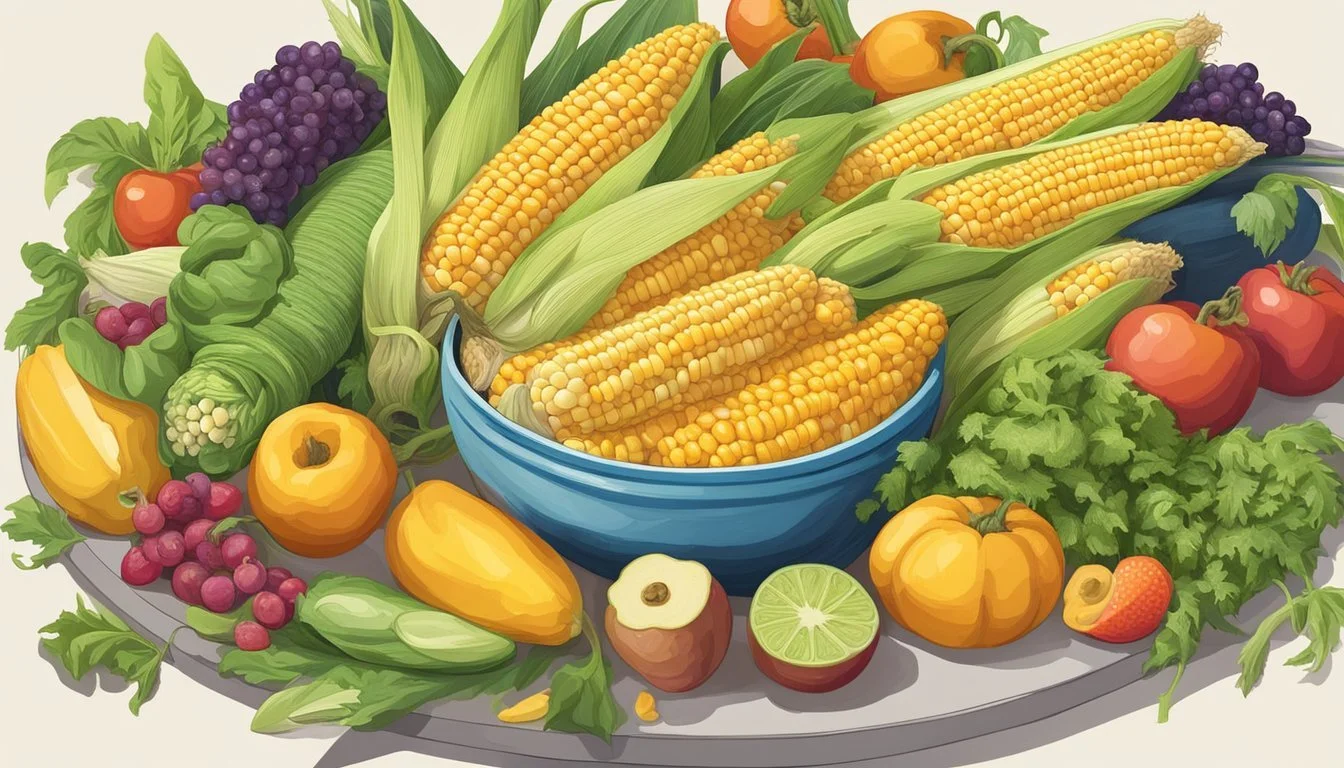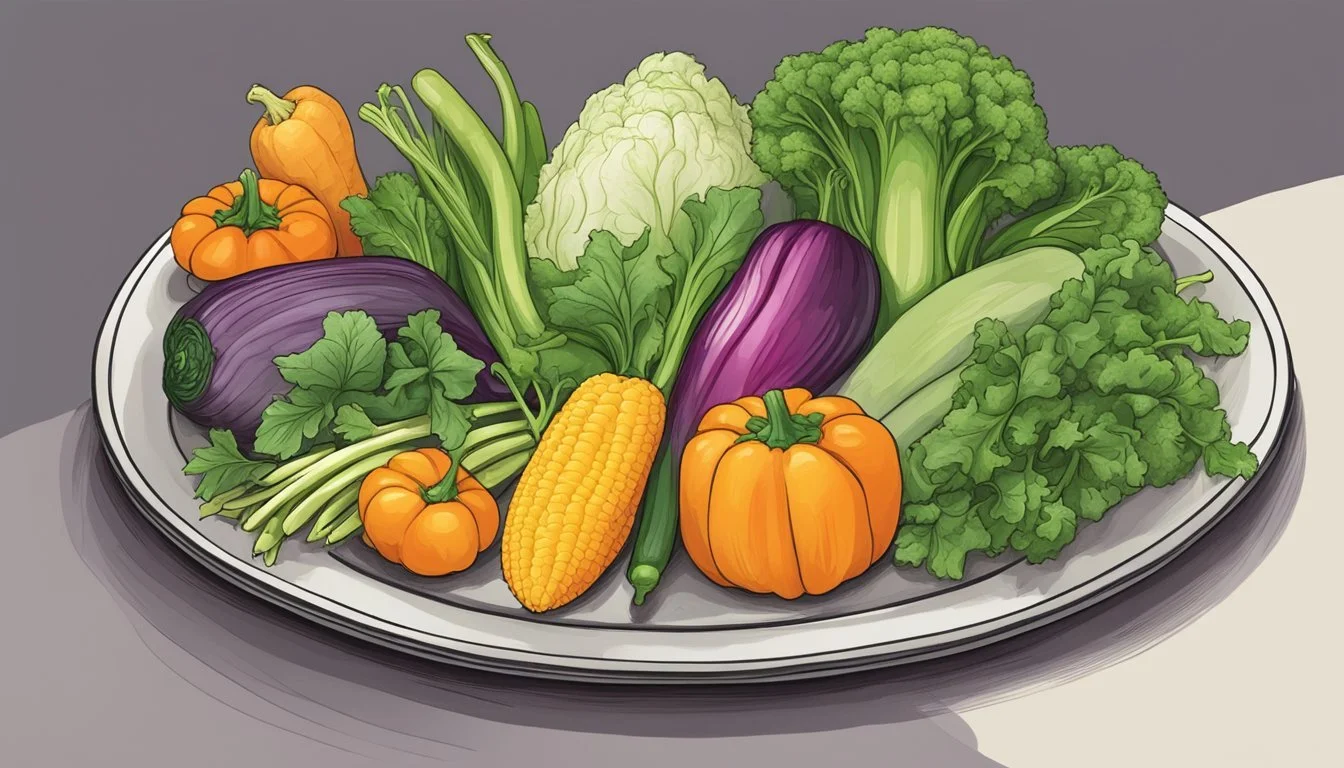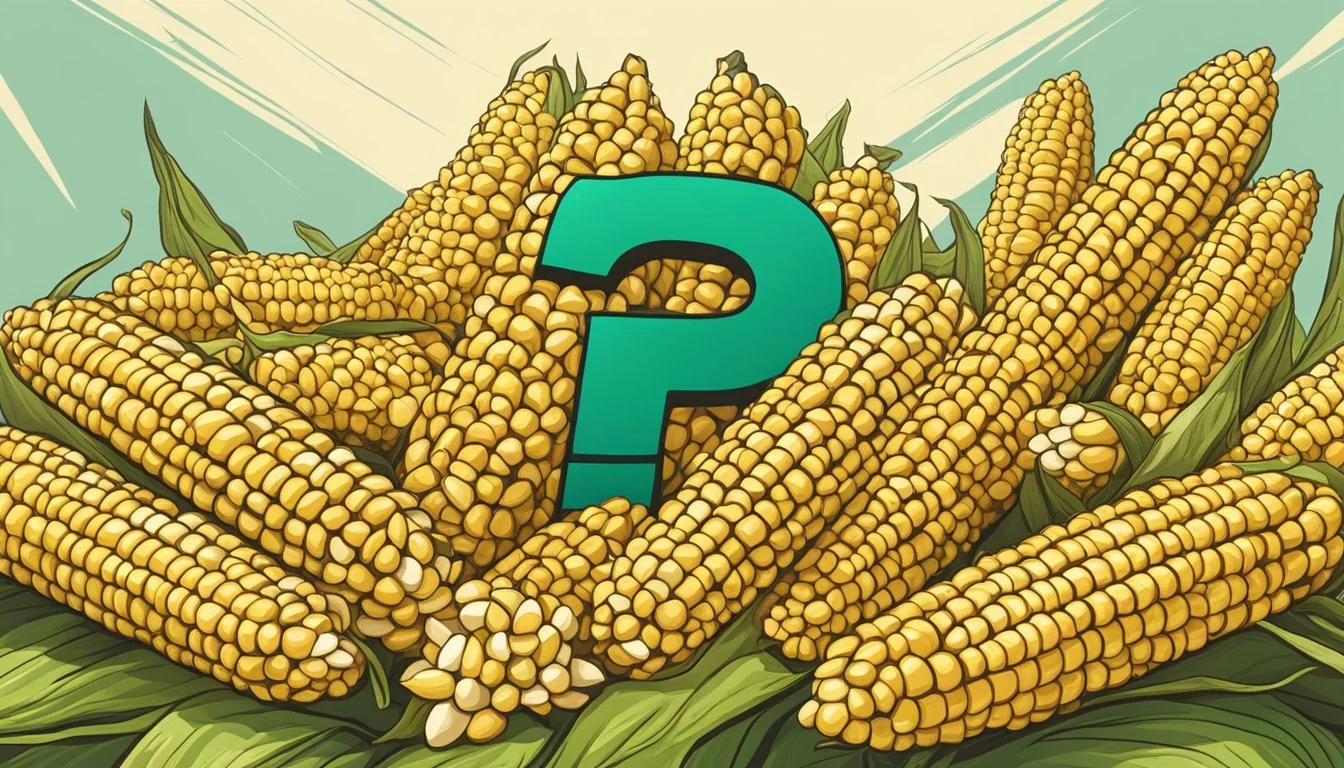How Many Servings of Corn Per Day Is Too Much?
Understanding Dietary Limits
Corn, a staple in many diets globally, is rich in carbohydrates, fiber, and essential nutrients, making it a valuable addition to meals. One key nutrient found in corn is fiber which aids in digestion and helps maintain feelings of fullness. The presence of vitamins such as B6 and B9 in corn can also be beneficial, contributing to energy levels and potentially supporting overall health.
While corn offers nutritional benefits, moderation is essential as with any food. A standard serving size of boiled yellow corn is about half a cup, equating to roughly 80 calories and 2 grams of fiber. This portion size provides a healthy balance, allowing room for the consumption of other foods to meet daily nutritional requirements.
Determining an upper limit for corn servings can depend on individual dietary needs, overall health goals, and the context of the entire diet. Overconsumption may lead to excessive calorie intake and displace other vital nutrients from diverse food sources. It's important for individuals to consider their total dietary pattern to understand how corn fits into a well-balanced diet, noting that what may be excessive for one person could be appropriate for another based on activity levels and metabolic requirements.
Nutritional Profile of Corn
Corn is classified as a vegetable when fresh, but is also considered a grain in its dried form. It is predominantly composed of carbohydrates and provides a moderate amount of protein and fiber with minimal fat.
Macronutrients and Calories
Calories: A medium-sized ear of corn provides approximately 88 calories.
Protein: There are about 3 grams of protein in an ear of sweet corn.
Fat: Corn is low in fat, with a medium-sized ear containing around 1.4 grams.
Carbohydrates: One ear of sweet corn contains 19 grams of carbohydrates.
Vitamins and Minerals
Corn contains several vital vitamins and minerals, including:
Vitamin C: Essential for immune function, with a single ear of corn providing about 7 milligrams.
Magnesium & Potassium: Important minerals for heart health and muscle function; corn contributes a modest amount to the diet.
Fiber Content
Fiber: A single ear of corn contains roughly 2 grams of fiber, contributing to digestive health and satiety.
Antioxidants
Corn includes antioxidants such as:
Zeaxanthin & Lutein: These antioxidants are beneficial for eye health, and corn is a naturally rich source of both.
Recommended Servings of Vegetables
Understanding the recommended number of vegetable servings can contribute significantly to maintaining a healthy diet. These recommendations are based on research and nutritional guidelines that aim to cover the needs of various age groups.
Dietary Guidelines for Americans
The Dietary Guidelines for Americans provide specific advice on the consumption of vegetables. They recommend that adults consume 2 to 3 cups of vegetables per day as part of a healthy eating pattern. These guidelines encourage a variety of vegetables, which includes dark green, red and orange, legumes (beans and peas), starchy, and other vegetables.
Dark green vegetables: 1.5 to 2 cups per week
Red and orange vegetables: 5.5 to 6 cups per week
Legumes (beans and peas): 1.5 to 2 cups per week
Starchy vegetables: 5 to 6 cups per week
Other vegetables: 4 to 5 cups per week
Vegetable Servings by Age Group
Vegetable servings vary by age group, as the quantity of vegetables needed changes with age, activity level, and overall health.
Children (2-3 years old):
1 cup per day
Children (4-8 years old):
1.5 cups per day for girls
1.5 cups per day for boys
Children & Teens (9-18 years old):
2.5 cups per day for girls
3 cups per day for boys
Adults (19-50 years old):
2.5 to 3 cups per day for women
3 to 4 cups per day for men
Older Adults (51+ years old):
2 to 2.5 cups per day for women
2.5 to 3 cups per day for men
It's essential to adapt the quantity and type of vegetables to specific dietary needs and preferences to ensure an adequate and varied intake that supports an individual's overall health.
Health Benefits of Corn
Corn, being a rich source of fiber, vitamins, and minerals, offers notable health benefits when included in a balanced diet. It supports digestive health, can help manage blood sugar levels, and contributes to eye health.
Digestive Health
Corn contains a considerable amount of dietary fiber, both soluble and insoluble. Soluble fiber helps to add bulk to the stool, facilitating regular bowel movements and thereby reducing the risk of constipation. This in turn can contribute to the overall health of the digestive system.
Blood Sugar Management
The fiber in corn also plays a role in blood sugar management. By slowing the absorption of sugar into the bloodstream, corn can help keep blood sugar levels more stable, which is especially important for individuals managing diabetes. This helps reduce the spikes in blood sugar that can occur after eating, which is crucial for maintaining metabolic health.
Eye Health
Corn is a good source of antioxidants, such as lutein and zeaxanthin, which are vital for eye health. These compounds help protect the eyes from oxidative damage and can reduce the risk of age-related macular degeneration and cataracts. Eating corn can, therefore, contribute to long-term health benefits for the eyes.
Corn in the Daily Diet
Eating corn provides a host of nutrients, and incorporating it into meals can be a delicious part of a balanced diet. However, one should consider the carbohydrate content when determining the right amount of corn servings per day.
Incorporating Corn into Meals
Breakfast: A person might add corn to omelets or breakfast burritos for a sweet, savory start to the day. Alternatively, corn can be a key ingredient in muffins or pancakes. Lunch: Corn kernels can enhance salads or be mixed into a soup, giving the midday meal fiber and a satisfying crunch. A hearty corn chowder could serve as a standalone lunch option. Dinner:_ For the evening meal, corn on the cob or creamed corn are popular sides. Incorporating corn into casseroles or using it as a base for polenta are other options for dinner.
Salad: Toss in roasted corn for texture and sweetness.
Popcorn: Air-popped popcorn is a low-calorie, high-fiber snack.
Smoothie: Add corn to a vegetable smoothie for added nutrients.
Dessert: Corn can be used in desserts, such as sweet corn ice cream.
Balancing Corn with Other Foods
A balanced diet involves not overindulging in any one food, corn included. Since corn is abundant in carbohydrates, pairing it with protein and healthy fats can create a more balanced meal. For instance:
Snacks: Pairing popcorn with nuts can balance macronutrients.
Main Dishes: Serving grilled chicken or fish with a side of corn provides a mix of protein and carbs.
Potential Risks of Overconsumption
Eating corn in moderation can be part of a healthy diet, but excessive intake can lead to various health issues. While corn itself is nutritious, providing fiber and essential vitamins, overconsumption of corn, especially in processed forms like high fructose corn syrup, can have detrimental effects on health.
Weight Gain and Obesity
Excessive consumption of corn, particularly in the form of high-calorie processed products, contributes to an increased calorie intake, which can lead to weight gain. For instance, a single serving of canned corn is about half a cup, but many people often consume more than this amount. This, coupled with added sugars and fats in processed corn products, can exacerbate the risk of obesity.
Serving size: 1/2 cup cooked corn (about 90 grams)
Calories: Approximately 80-100 calories per serving
Fat: Generally low in fat; variations with butter or cream can increase fat content
Impact on Blood Sugar
Corn is a starchy vegetable that can impact blood glucose levels. Overindulging in corn can cause spikes in blood sugar, especially in sweet corn varieties. Processed corn products often contain added sugars, increasing the risk of hyperglycemia and contributing to the development of insulin resistance over time.
Sugars: A natural presence in whole corn; added sugars prevalent in syrup forms
Glycemic index: Can vary; processed corn products with added sugars have a higher glycemic impact
Nutrient Imbalance
Corn is naturally high in carbohydrates and low in protein and certain essential nutrients. Overeating corn at the expense of more nutrient-dense foods can result in an imbalance, often characterized by insufficient protein and an excess of calories and sodium from processed corn products.
Carbohydrates: High in whole corn; important to balance with other macronutrients
Sodium: Low in natural corn; processed versions and snacks can be high in sodium
Special Considerations
When assessing the appropriate amount of corn servings per day, one must consider personal health conditions, such as diabetes, potential allergies, and the debate surrounding genetically modified corn. Each factor plays a crucial role in determining how corn fits into an individual's diet.
Corn for People with Diabetes
Corn contains carbohydrates, which can affect blood sugar levels. Individuals with diabetes should monitor their corn intake as part of their daily carbohydrate allotment. The American Diabetes Association recommends that a meal containing corn should be balanced with protein and healthy fats to mitigate the spike in blood sugar levels.
Carbohydrate Content: A serving of corn may contain 15-30 grams of carbohydrates, depending on the portion size.
Portion Control: A small portion can be integrated into a meal, but it’s essential for people with diabetes to monitor the overall impact on their blood glucose.
Corn Allergies
Corn allergies are less common but can cause symptoms ranging from mild to severe, including anaphylaxis. Individuals known to have a corn allergy must avoid corn in all its forms.
Symptoms: Reactions can include hives, swelling, and gastrointestinal distress.
Corn Derivatives: Vigilance is necessary as corn is present in many processed foods and beverages in forms like high-fructose corn syrup and maltodextrin.
Genetically Modified Corn Issues
Genetically modified (GM) corn has been a subject of debate regarding its health and environmental impacts. Some consumers are concerned about the long-term effects of consuming genetically modified foods.
Health Concerns: There is no consensus on the health effects of GM corn, but some people choose non-GM or organic varieties as a precaution.
Labeling: It is advised to look for labels indicating whether corn is genetically modified, especially for those who wish to avoid GM products.
Preparing and Cooking Corn
When it comes to preparing and cooking corn, one should consider the proper selection, storage, and cooking methods to ensure the best taste and nutritional value. The process can vary slightly whether working with fresh, frozen, or canned corn.
Selection and Storage
Fresh Corn: Look for husks that are green and not dried out, with moist and sticky tassels. Kernels should be plump and appear in tight rows. Store fresh corn in the refrigerator with the husks on to maintain freshness.
Frozen Corn: Ensure that the bag is free from ice crystals, which may indicate thawing and refreezing. Store frozen corn in the freezer until ready to cook.
Canned Corn: Check for dents or rust on cans as signs of potential spoilage. Store canned corn in a cool, dry place until use.
Methods of Cooking
Boiling:
For fresh or frozen corn, bring a large pot of water to a boil.
Add the corn and cook for 5-7 minutes for fresh, slightly longer for frozen ears until tender.
Remove with tongs to prevent burns.
Preheat grill to medium-high heat.
Fresh corn can be grilled in the husk after soaking in water, or husked and placed directly on the grill for a charred flavor.
Rotate for even cooking, typically 10-15 minutes.
Baking:
Preheat the oven to 375 degrees Fahrenheit for fresh corn.
Husk the corn, clean, and wrap each ear in aluminum foil with butter, salt, and pepper.
Bake for about 25-30 minutes.
Other methods like steaming are suitable mainly for smaller grains of corn or when adding corn to dishes like steamed broccoli; this can be a quick and easy preparation method preserving nutrients and crispness. No matter the method, one should avoid overcooking to preserve the taste and nutritional content of the corn.
Alternatives to Corn
While corn is a nutritious choice for many, individuals may seek alternatives due to dietary preferences or in pursuit of variety. The following subsections outline recommended substitutes that offer nutritional benefits and can cater to diverse dietary needs.
Other Healthy Vegetables
Vegetables serve as cornerstone ingredients in a balanced diet, providing essential vitamins, minerals, and dietary fiber. Highlighted below are options that can substitute for corn:
Leafy Greens: Nutrient-rich choices such as spinach, kale, and broccoli are low in calories and high in vitamins A, C, and K, as well as calcium and iron.
Root Vegetables: Varieties like carrots and sweet potatoes supply beta-carotene, which is crucial for eye health, and other nutrients.
Cruciferous and Other Vegetables: Incorporating squash or peas adds valuable antioxidants and fiber to one's diet.
Whole Grains and Legumes
For those looking beyond vegetables, whole grains and legumes represent a substantial part of a healthy diet, featuring alternatives to corn that are rich in nutrients and dietary fiber:
Whole Grains: Staples such as quinoa, brown rice, and bulgur offer versatility and are complete with proteins, B-vitamins, and trace minerals.
Legumes: Nutrient-dense beans, lentils, and chickpeas are excellent plant-based protein sources that also provide fiber, iron, and complex carbohydrates.
By integrating a diverse range of vegetables, whole grains, and legumes into their meals, individuals can enjoy a varied diet that meets nutritional requirements and caters to personal taste preferences.
Frequently Asked Questions
In this section, we will address common inquiries regarding the consumption of corn, particularly for individuals with gluten intolerance, and those following vegan or vegetarian diets.
Corn and Gluten Intolerance
Corn is a gluten-free grain, making it a suitable option for individuals with gluten intolerance or celiac disease. It is crucial to monitor serving sizes to ensure nutritional balance, as corn also provides a significant source of starch in one's diet.
Corn in Vegan and Vegetarian Diets
Corn can play a vital role in vegan and vegetarian diets, providing essential nutrients such as fiber, vitamins B6 and B9, and antioxidants like lutein and zeaxanthin. Adults should aim to incorporate corn as part of their whole grain intake, but it should not be the sole grain source due to its high starch content.










